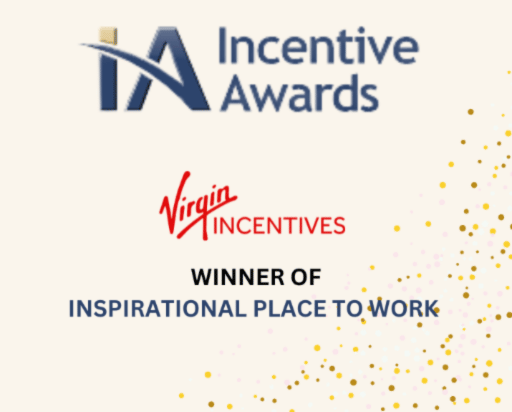In today’s ultra-competitive talent market, attracting top-notch candidates isn’t just about offering a hefty salary and a fancy job title. Nope, it’s about something much deeper – it’s about showcasing your people culture! Yep, that’s right, it’s time to let your company’s unique vibe shine bright like a diamond if you want to improve your talent acquisition strategies.
Why, you ask? Well, let’s break it down.
Why Communicate Your People Culture?
Picture this: You’re on the hunt for a new job. You’ve got skills, experience, and ambition oozing out of every pore. But where do you want to work? Somewhere that feels like home, right? Somewhere that values your input, celebrates your wins, and supports you through the rough patches. That, my friend, is what people culture is all about.
But here’s the kicker – if you don’t communicate your people culture effectively, how will those star candidates know you’re the dream team they’ve been searching for? Exactly! So, it’s time to roll up those sleeves and get proactive with those talent acquisition strategies.

Tips to Showcase Your People Culture:
- Walk the Talk: Don’t just talk the talk, walk the walk! Your people culture should permeate every aspect of your business, from your company values to your daily operations. Be authentic, and let your culture shine through in everything you do.
- Tell Stories: Humans love stories, right? So, why not use storytelling to your advantage? Share anecdotes, testimonials, and success stories that illustrate what it’s really like to be part of your team. Authenticity is key here – nobody likes a tall tale!
- Showcase Benefits and Perks: Sure, a competitive salary is great, but what else do you bring to the table? Flexible working hours, wellness schemes, team bonding experiences – shout about them from the rooftops! These perks can be real game-changers for potential candidates.
- Get Social: In today’s digital age, social media is your best friend when it comes to talent acquisition strategies. Use platforms like LinkedIn, Instagram, and Twitter to give people a behind-the-scenes glimpse into your company culture. Share photos, videos, and employee spotlights to show the human side of your brand.
- Involve Your Team: Your employees are your best brand ambassadors, so get them involved! Encourage them to share their experiences on social media, participate in industry events, and even contribute to your employer branding efforts.
Interview with Hayley Maclean, Talent Acquisition Partner:
Now, let’s dive into the juicy part – an interview with Hayley Maclean, our Talent Acquisition Partner who knows a thing or two about talent acquisition strategies and standing out in the competitive talent market.

Name and your role?
I’m Hayley and I’m the Talent Acquisition Partner for Virgin Experience Days, Virgin Experience Gifts and Virgin Incentives.
How do you define “people culture” within a company, and why is it important in today’s competitive talent market?
I’m a big believer that a ‘people culture’ isn’t something you create like a handbook or set of rules for people to follow, it does just happen (with the support of the right strategy, open mindedness, creativity and input from everyone across the business too).
It’s so important because the majority of us spend more time at work than we do anywhere else, being in the right working environment for you is at times more valuable than the salary. We all go to work to get paid, but we stay in jobs where the culture is right and a lot of people today value work/life balance and wellness ahead of money.
What are some key elements or characteristics that contribute to a positive people culture in a company?
It’s about making people feel comfortable and able to be their true selves at work. Embracing everyone for themselves and fostering a workplace that is without judgement.
This does start from within, employee’s have got to be accountable for their contributions to the people culture and what they want, taking an active role in creating it; positivity feeds off positivity and embracing change. The same goes for negative vibes – if there is something that’s impacting the culture of the workplace negatively, identify the issue, hold yourselves accountable and take steps to change it or get support.
We all need to be open minded and considerate of each other, mindful that people have different learning styles, communication types and we all handle pressure and stress in different ways – this can be strengthened in the workplace with ongoing training and having an open dialogue where people can discuss and learn from each other. It starts with us to influence, inspire and encourage others.
In your experience, what are the most effective ways for employers to communicate their people culture to potential candidates?
Online platforms such as LinkedIn are a great way to show the ‘people’ behind the company. We are all a lot more savvy with researching roles and companies to work for. Employee advocacy on LinkedIn platforms showcasing their day-to-day is a great way for people to see the reality of people’s roles within a company; And company pages sharing internal news and events all contribute to showing people culture to the external market.
Also, having a careers site is an excellent tool and a place for candidates to see more information about a company (not just what they sell or do), it’s a great asset for candidates to research and learn more about a company before applying for a role. When there are a number of ‘similar’ roles in the market, you’ve got to think ‘Why would I pick this company over another’ and a careers site is an excellent tool for candidates to be able to see and buy-in to a company’s purpose, values and have confidence that this company is the right place for them (it’s not just about having the right skills to be successful in the role).
I’ve always said there is the right company for everyone, culture fit when recruiting is incredibly important. Whilst going through the active recruitment process, the way we communicate with our candidates will give them an insight into how we communicate on the inside and consistency in that approach is necessary, not just when you reach interview stage but also tone of voice on job descriptions will engage a potential candidate and hopefully excite them to apply too.
Could you share examples of successful strategies or tactics that the company has used to effectively communicate the people culture in a competitive talent market?
For Virgin Experience Days and Virgin Experience Gifts, our products are so exciting, but it can be hard to show the extraordinary people who are behind the excitement and shout about them.
In the past 12 months we have launched our Careers site for Virgin Experience Days, which tells our story and shares more about the people and benefits of being part of our team. Take a look here: https://careers.virginexperiencedays.co.uk/
We have put a lot of work into our company purpose and our departmental objectives, which underpin our values and align with our culture. We embed these into our teams and day-to-day activities.
The tone of voice and information provided on our job descriptions is also linked with our informal communication style, which compliments our vibe of encouraging a candidate to connect with our brand, and for people to be their true genuine selves throughout the process.
We talk about our culture as part of the interview process too, being straight up about the positives and negatives, and being genuine is absolutely crucial so candidates know what they can realistically expect when joining our team.
We have a Good Vibe Tribe made up of volunteers across the business and a framework to encourage our teams to challenge the norm of what a internal celebration should be, it’s not just about the fun element of our business (we still plan and enjoy the parties and raising a glass with our peers), but encouraging learning, wellness, DE&I awareness and working with Charity partners is a crucial part of our strategy.
In your opinion, what are some common mistakes that employers make when trying to communicate their people culture during recruitment, and how can they avoid them?
Love bombing – corporate edition. By only selling ‘the dream’, and not being straight up about some of the challenges businesses are facing – this adds to the feeling of authenticity for candidates whilst going through the process.
It’s great to say all the good things, but miss out the challenges and that there is some hard graft ahead – particularly in our business. People can also be motivated by a challenge, and you grow when you are given the exposure to learn something new. We have some amazing people, and they work HARD. It’s easy to focus on the fun and forget that there is a job to do.
We need to encourage hiring managers and anyone who takes an active role in the hiring process to be open minded and take it back to basics – listen.
Instead of flooding a candidate with all the things you enjoy about the workplace, ask them what they are looking for and have an open two way conversation about whether this is aligned currently to manage their expectations. Use this information to adjust processes and support them with the things that are important to them, what’s important to one may not be the same for someone else, so embrace those differences with respect. Culture is something that is forever evolving, you have to flex and be open minded to what’s new, what’s trending and keep a fresh perspective.

There you have it, folks – the inside scoop on communicating your people culture like a pro. Now go forth, smash those talent acquisition strategies and let your culture shine bright! Looking for new exciting rewards and employee benefits that are sure to be a winner with your current employees and new talent? Get in touch with us below to find out more about our exciting incentives:

